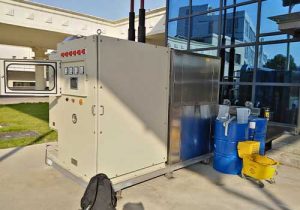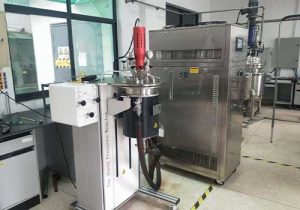heating and cooling water
Heating and Cooling Water: A Comprehensive Guide
Introduction
Heating and cooling water systems are critical for a wide range of applications, ensuring the efficient operation of industrial processes, maintaining comfortable indoor environments, and supporting healthcare and laboratory functions. These systems utilize various technologies to heat or cool water, which is then circulated to achieve the desired temperature control. This article explores the working principles, types, applications, and benefits of heating and cooling water systems, providing a detailed understanding of their functionality and importance.

Working Principles
Heating and cooling water systems operate by transferring heat to or from water, which is then used to regulate temperatures in different applications. The basic processes include:
Heating Water: Heat is added to water using boilers, heat pumps, or solar thermal systems. The heated water is then circulated through radiators, underfloor heating systems, or industrial processes.
Cooling Water: Heat is removed from water using chillers, cooling towers, or evaporative cooling systems. The cooled water is circulated through coils or heat exchangers to absorb heat from the environment or processes.
Types of Heating and Cooling Water Systems
Boilers: Use fuel (gas, oil, or electricity) to heat water, which is then circulated for space heating or industrial processes.
Heat Pumps: Transfer heat from the environment (air, ground, or water) to heat or cool water, providing both heating and cooling capabilities.
Chillers: Remove heat from water using a refrigeration cycle, commonly used in HVAC systems and industrial cooling.
Cooling Towers: Dissipate heat from water by evaporating a small portion of it, releasing heat to the atmosphere.
Solar Thermal Systems: Use solar energy to heat water, which can be used for domestic hot water, space heating, or industrial processes.
Applications
Heating and cooling water systems are used in various sectors, including:

HVAC Systems: Providing heating and cooling for residential, commercial, and industrial buildings.
Industrial Processes: Maintaining precise temperatures for manufacturing, chemical processing, and food production.
Healthcare Facilities: Ensuring controlled environments in hospitals, laboratories, and pharmaceutical manufacturing.
Data Centers: Managing heat generated by servers and IT equipment.
Agriculture: Supporting greenhouse climate control and livestock housing.
Advantages
Efficiency: Water’s high thermal conductivity and capacity make it an effective medium for heat transfer.
Versatility: Suitable for a wide range of applications and environments.
Energy Savings: Modern systems, such as heat pumps and high-efficiency boilers, can significantly reduce energy consumption.
Scalability: Can be easily scaled to meet the heating and cooling demands of different processes and facilities.
Maintenance Practices
Regularly inspect and clean heat exchangers, boilers, and cooling towers to ensure efficient heat transfer.
Monitor water quality and treat it to prevent scaling, corrosion, and biological growth.
Check for leaks and repair them promptly to maintain system performance.
Schedule professional maintenance to address potential issues and extend the system’s lifespan.
Use predictive maintenance technologies, such as IoT sensors, to monitor system health and prevent failures.

Energy Efficiency Considerations
Energy efficiency is a critical factor for heating and cooling water systems. Implementing energy-saving measures, such as variable speed pumps, high-efficiency boilers, and optimized control systems, can significantly reduce energy consumption and operational costs. Additionally, using energy recovery systems to reuse waste heat can further enhance efficiency.
Environmental Considerations
The environmental impact of heating and cooling water systems can be minimized by adopting sustainable practices, such as using renewable energy sources (solar, geothermal), eco-friendly refrigerants, and water conservation techniques. Regular maintenance and proper disposal of coolants also contribute to sustainability. Businesses are encouraged to adopt energy-efficient technologies and practices to comply with environmental regulations and reduce their carbon footprint.
Conclusion
Heating and cooling water systems are essential for maintaining optimal temperatures in various industrial, commercial, and residential applications. By understanding their working principles, types, and maintenance requirements, users can optimize the performance and sustainability of these systems. Whether for HVAC systems, industrial processes, or healthcare facilities, heating and cooling water systems offer a reliable and efficient solution for temperature control.
Related recommendations
Semiconductor Chip High and Low Temperature Test Chiller
1181Semiconductor Chip High and Low Temperature Test Chiller The high and low temperature test chiller of semiconductor power chip can provide users with a field source with controlled thermal c...
View detailsglycol cooling unit
347Glycol Cooling Unit: A Comprehensive GuideIntroductionA glycol cooling unit is a specialized refrigeration system that uses a glycol-water mixture as the cooling medium. Glycol, typically ethylene...
View detailsmotor chiller
171Working Principles of Motor ChillersHeat Transfer BasicsMotor chillers operate on the fundamental principle of heat transfer. Motors, during operation, convert electrical energy into mechanical ...
View detailsHow to Choose a Suitable Chiller for Laser Equipment?
1334How to Choose a Suitable Chiller for Laser Equipment? Laser equipment is widely used in high-end precision machinery industries, such as aerospace equipment, precision instruments and other ...
View details
 LNEYA Chiller
LNEYA Chiller







HelloPlease log in